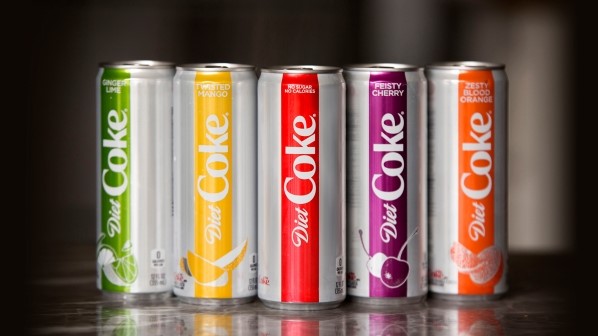Diet Coke targets the Millennial market

Coke has lost its cool. With a drop in sales, particularly among the Millennial market, the Coca-Cola Company has invested in a multi-national rebrand of Diet Coke, with new can designs, flavours, and campaigns aimed at modernising the brand and attracting the younger consumer.
Soda drinks — especially their sugar-free, aspartame-filled variants — have seen a steady decline in sales over the past decade as younger generations of consumers have shifted their buying habits in favour of energy drinks and flavoured waters. Diet Coke, the second-largest brand for the Coca-Cola, has seen a 0.6% decrease in sales over the past year, with volume sales declining 1.7% in the first nine months of 2017. Following the success of the Coke Zero rebrand in the UK, which sparked “double-digit growth” according to Rafael Acevedo, Coca-Cola North America’s group director for Diet Coke, Coca-Cola has decided to rebrand Diet Coke with the hope of inspiring a similar change.
“Millennials are now thirstier than ever for adventures and new experiences, and we want to be right by their side,” Acevedo says. “We’re contemporizing the Diet Coke brand and portfolio with sleek packaging and new flavours that are appealing to new audiences.”
Diet Coke’s brand overhaul launches in late January in the US, with future launches planned for Canada and the UK over the next few months. This revamp includes a new can shape and design, four new flavours, and a bolder new marketing campaign, all targeted at Millennials.
The new can design features a simplified typeface and slimmer, taller silver cans with a single vertical coloured stripe that indicates the can’s flavour. James Sommerville, VP of Coca-Cola global designs, explains that the new can design “Elevates the brand to a more contemporary space, while still using at its foundation the recognisable core brand visual assets.” A tall, slim can with bold colour contrast draws comparisons to the packaging of competitor energy drinks such as Red Bull, notes AdWeek. Mirroring the appearance of Millennial-favoured beverages is just one indication of Coca-Cola’s strategy to attract a younger audience.
Another is the two years Coca-Cola spent choosing their four additional Diet Coke flavours (ginger lime, feisty cherry, zesty blood orange, and twist mango). Its decision to add additional flavours to the Diet Coke line-up was inspired by the younger demographic’s love for stronger tastes in their food and beverages. The company spoke to 10,000 Americans and developed 30 final flavour combinations, which it tested with consumers until narrowing it down to the final four.
It also opted for an edgier marketing campaign to appeal to young consumers, with slogans such as “Because it’s fizzing delicious” and “Because cherries aren’t so innocent” featured across digital advertisements. With a move toward the bold, exciting, and modern, Diet Coke hopes to regain its Millennial consumers and see the same rise in sales that Coke Zero Sugar has recently enjoyed. With the anticipated rebrand still on the horizon, only time will tell.
For more from Transform magazine, follow us on Twitter @Transformsays












